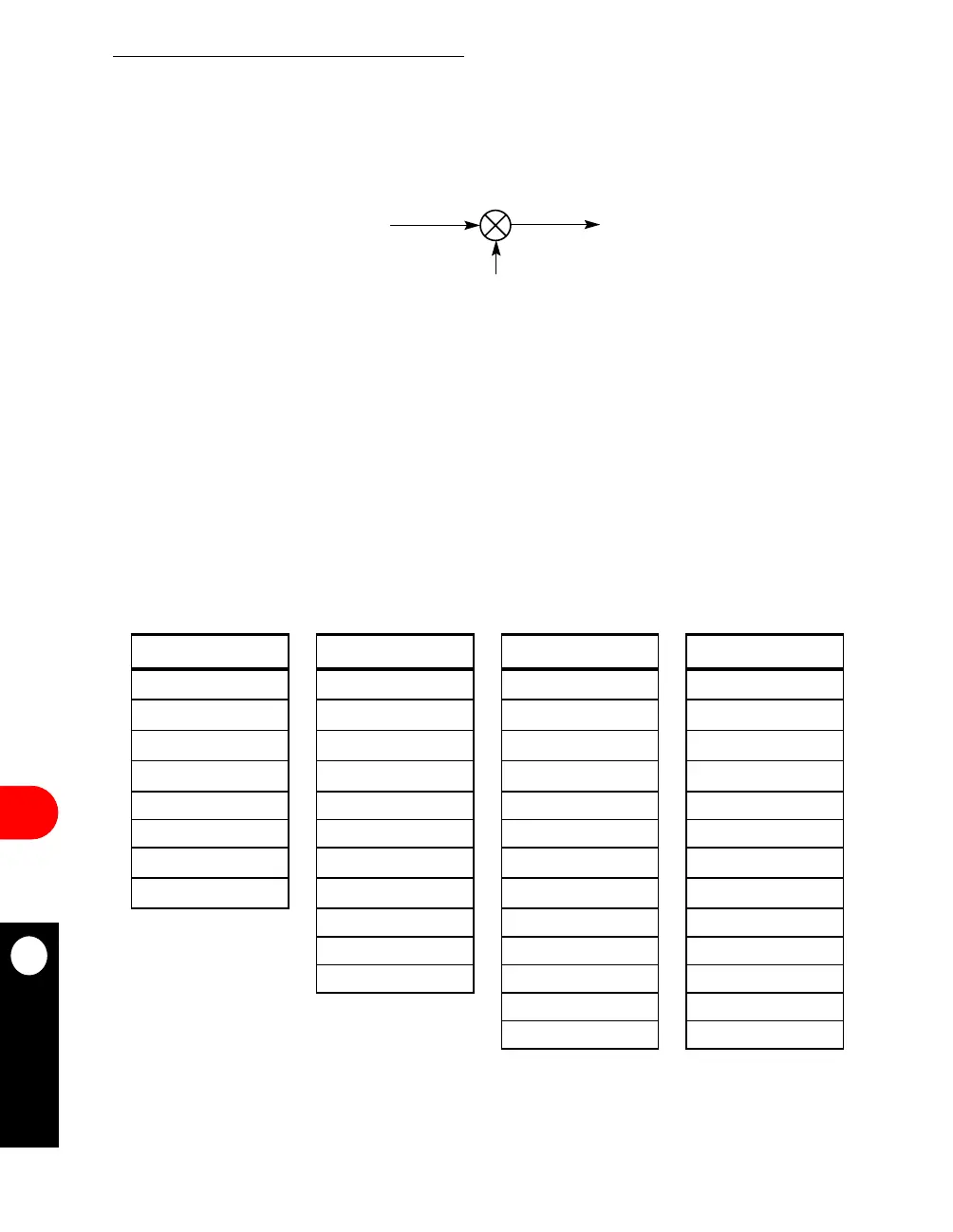Communication Processor Module
16-60 MPC823e REFERENCE MANUAL MOTOROLA
DSP
COMMUNICATION
16
PROCESSOR MODULE
16.3.4.7 MOD–REAL SIN, REAL COS, COMPLEX X, AND REAL/COMPLEX Y. The
MOD function implements a basic modulator function with a modulation table composed of
{cos ωnT, sin ωnT} pairs, complex input samples, and real outputs. The input data is in a
circular buffer with size M+1 and the output data is in a circular buffer with size N+1.
16.3.4.7.1 Modulation Table and Sample Data Buffers. The modulation table is
composed of 16-bit cosine and sine pairs that occupy K+1 bytes in memory. The sample
input buffer is a cyclic buffer containing M+1 bytes. Each sample is a pair of 16-bit half-words
(real and imaginary components) and the new sample is stored in the address that follows
the previous sample. The output buffer is a cyclic buffer that contain N+1 bytes and the new
output is stored in the address that follows the previous output. The output buffer can be real
or complex, depending on the X bit in the function descriptor.
Figure 16-24. MOD Implementation Example
MODULATION TABLE INPUT SAMPLES OUTPUT (REAL) OUTPUT (COMPLEX)
sin q
1
***
cos q
1
***
sin q
2
imag {x(n-k+1)} * *
cos q
2
real {x(n-k+1)} real{Y(n-K+1)} imag{Y(n-k+1)}
* * * real{Y(n-k+1)}
* imag {x(n-2)} * *
sin q
n
real{x(n-2)} real{Y(n-2)} *
cos q
n
imag{x(n-1)} real{Y(n-1) imag{Y(n-2)}
real{x(n-1)} real{Y(n)} real{Y(n-2)}
imag{x(n)} imag{Y(n-1)}
real{x(n)} real{Y(n-1)}
imag{Y(n)}
real{Y(n)}
K + 1 bytes M + 1 bytes N + 1 bytes N + 1 bytes
Figure 16-25. MOD Table and Sample Data Buffers
cos
ω
nT, sin
ω
nT
{REAL}
X(n)
Y(n)
{COMPLEX}
{REAL OR COMPLEX}
REAL Y n
(){}
REAL X n
(){} ω
nTcos
×
IMAG
Xn
(){} ω
nTsin
×–=
IMAG
Yn
(){}
REAL X n
(){} ω
nTsin
×
IMAG
Xn
(){} ω
nTcos
×
+
=

